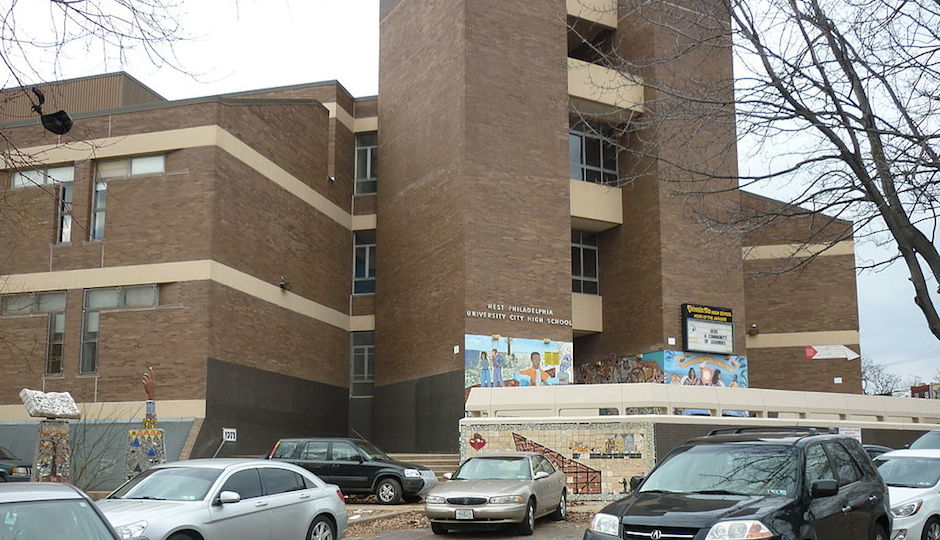Is Architectural Consistency Overrated?

University City High School. Photo via Wikimedia.
One of the big concerns many residents of neighborhoods undergoing major change have is preserving the character of their neighborhood. Usually, such discussions focus on the architecture of an area, especially an area where the homes are of a uniform style and have lasted long enough.
Many Philadelphia neighborhoods like Powelton Village are filled with distinctive 19th-century Victorian and neoclassical homes. Some residents of such neighborhoods want to make sure that 19th-century ambience survives intact.
Not everyone agrees with this view, however.
Two Powelton residents, for instance, took sharply diverging views at a planning workshop on March 5 designed to get community input on how the University City High School/Drew Elementary School parcel will be redeveloped.
One Powelton Village resident listed as one of her priorities that any new housing built on the site be architecturally consistent with the existing homes in the community. One of her neighbors disagreed: “I’d like to see some modern architecture,” she said.
And this city has several neighborhoods where old and new architectural styles mix it up together. One of the earliest examples of this approach is Society Hill, Edmund Bacon’s urban-renewal masterpiece. In that neighborhood, older homes that were still habitable were left alone, while severely deteriorated ones were demolished and replaced with new infill construction, most of it of a decidedly modern bent. The neighborhood to its west, Washington Square West, also underwent a period of renewal in the 1970s, albeit less extensive than Society Hill’s, and there, some builders did put up new housing that resembled the old along with more modern designs.
Today’s answer to Society Hill is Northern Liberties, where it’s rare for a builder to propose new housing that looks like the 19th-century row homes that may abut it. No one who lives in or visits the neighborhood seems to regard this as out of place at all.
On the other hand, most of the most active builders in Graduate Hospital erect new homes that closely resemble their traditional townhouse neighbors. Frankly modern developments such as Carpenter Square are noteworthy for breaking the rules, but those rule-breakers add a little pizzazz to the district.
The G-Ho experience, however, points to the wisdom of that old saw about foolish consistency. A city is a constantly evolving organism, and like most living organisms, it sheds dead skin and replaces it with new. While a harmonious streetscape is always a desirable feature, such harmony does not require uniformity of style.


